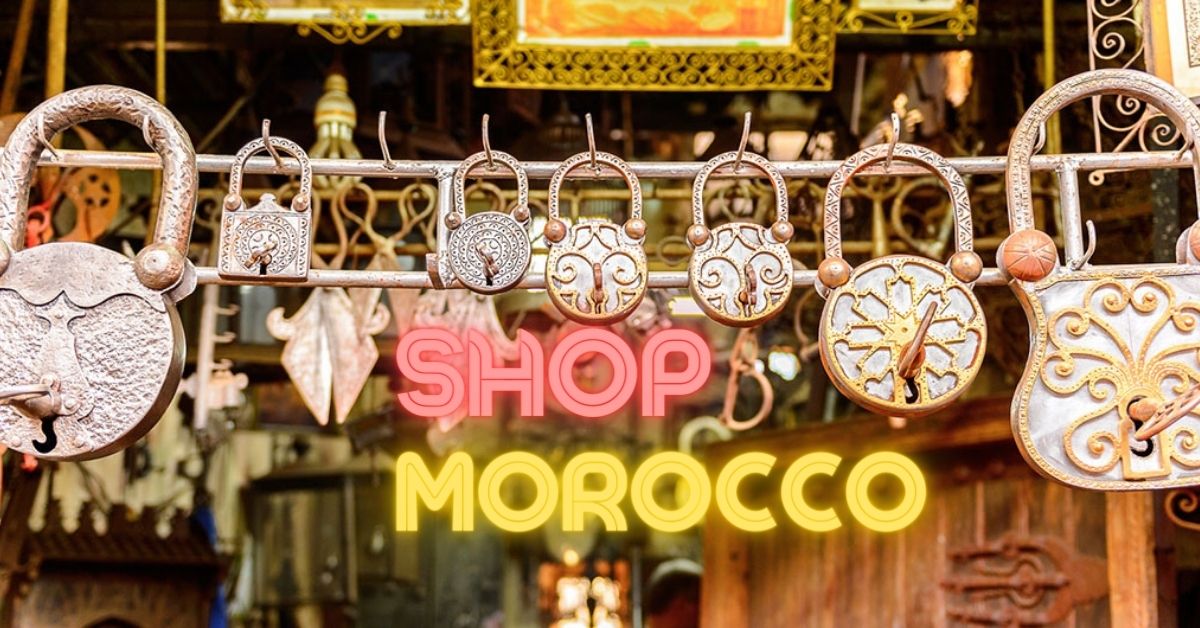Ultimate Shopping in Morocco: Here’s What to Look For

You will never forget your shopping experiences in Morocco. There are the open bazaars and medieval markets, back-alley souks in labyrinths of the medinas. From Fes to Marrakech, the neon colors and bold patterns deliver a sensual assault.
In a good way! It is overwhelming at first. Every shopkeeper is a carnival barker, circus performer, negotiator, host and many are relentless beyond American tolerance.
I loved every negotiation. Every conversation. It was friendly, noisy and chaotic.
Americans don’t do this. It’s not “polite.” The price is, well, the price. Here in Morocco, it’s performance art. Negotiation is a process to be savored. A social rite of passage.
That’s why it’s important to have some idea of what you want to buy and a price point in mind before you set foot in the overcrowded, noisy warren of shops and people with all the glorious artisanal Moroccan crafts.

The selection is vast. A combination of Berber, Andalusian, Arab and European influences in ceramics, textiles, wood and jewelry. Here are some of the things to look for:
Silver and Metal Arts
I found the most beautiful silver jewelry in the southern High Atlas mountains, crafted by both Berber and Arabs. Taroudant and Tiznit are best known but pieces are often traded between areas so you can buy anything, anywhere. From Marrakech to Ouarzazate, Meknes to Erfoud. Casablanca to Fes.

The desert nomads in the Berber regions, Touareg and Saharaouia, craft pieces like the ones used for centuries in tribal celebrations; the southern crosses, fibulas used to fasten Berber clothing, heavy stone and clay beaded necklaces with copper, silver and wooden pendants, delicate filigree bracelets, another of the Berber arts.

Charms of The Hand of Fatima, the “Khamsa” of five for the five fingers are everywhere and are thought to offer protection from the “evil eye.” Silver tea pots ( no Moroccan home is without this) and serving trays are widely available stamped or engraved with symbolic Berber design in graphic and ornate detail.
The shops in Ait Ben Haddou were filled with new and antique treasures.



Leather
One popular tannery and one of the country’s oldest is in the Fes Medina. The process goes on as it has for the last 900 years with animal hides marinating in a concoction dependent on pigeon poop as activator and tenderizer. You read that correctly. The tannery owners collect it from local residents each Friday. Exactly how this occurs is left to the imagination.

Entering the tannery, visitors are handed fistful of mint. No one explains why, but it is soon apparent. It stinks. I used it.
Bags, jackets, shoes, house slippers called babouches, luggage and embroidered goat skin ottomans are readily available and ripe for bargaining. After half an hour of conversation with Hamid, I bought a pocketbook/backpack combo made of the softest camel belly leather.
I know, camel belly? Apparently it’s a thing in Morocco.
He later added a free pair of babouches as a “gift” which likely meant I had overpaid. But we were both happy when we parted. Friends bought custom leather jackets that were delivered to their hotel hours later.
Textiles
The rugs and carpets are just incredible and they are everywhere.

In the smaller cities like Essaouira, the selections were just as extensive (go to see my friend Rahid, the owner of Maison de Berber and tell him the US grandma sent you…) but without the lengthy negotiations of Fes and Marrakech. You still have to do the dance but we came to agreements more quickly.

The quality and prices of both knotted and woven rugs doesn’t compare with any other place I’ve been so far. But I’ll keep you posted.

I bought one beautifully woven Berber runner and it delights me every time I look at it. Shawls, scarves, embroidered fabrics used in kaftans and djellabas are gorgeous, inexpensive and widely available, best bought in quantities of 3 or more for the best prices.
Wood
Remember this word, THUYA wood. It’s deliciously fragrant and found everywhere in Essaouira. Crafted into ornately inlaid pieces of furniture, into all types of statues and art, an endless assortment style and sizes of boxes, frames and trays.


It is inexpensive and stunning. If it’s lattice-work that intrigues you, cedarwood from the Rif and Mid Atlas is used for doors, screens, tables and chests. And yes, you can ship anything home.

Finally,
Spices Everywhere!

Primarily, cayenne, turmeric, cinnamon, cumin, ginger, saffron, and paprika. You can ask shopkeepers to blend Ras El Hanout, a wildly varied combination of regional spices, sometimes more than 35, used for stewing and grilling meat.

Just remember, never pay the first price asked and decide what the item is worth to you before you begin. And always part friends. Salam Alaikum!
Related Posts
Eat at the Most Bizarre, (delish) and Colorful Food Circus in the World!
Bubbling cauldrons of soups, meats wrapped in palm leaves, a rainbow of desserts – honestly…when …
May 17, 2024Giving Alms: Silent and Beautiful Sunrise in Luang Prabang
Each morning before sunrise, the faithful line the sidewalks of the city of Luang Prabang …
May 13, 2024

Kim Perdew | 20th Nov 22
Very cool walk through the markets. LOVE all the photos.